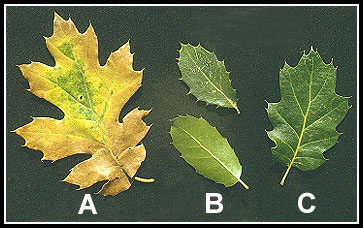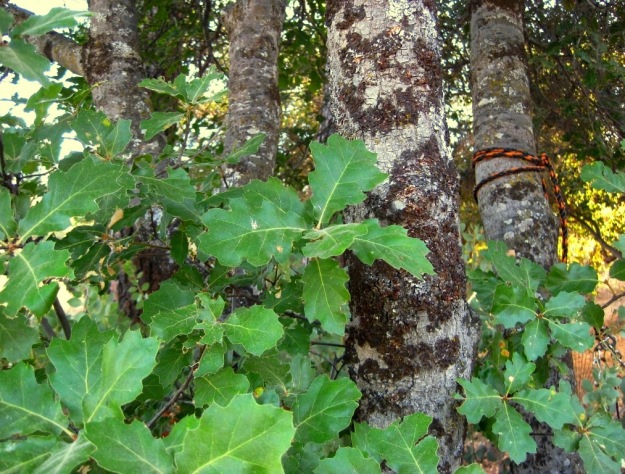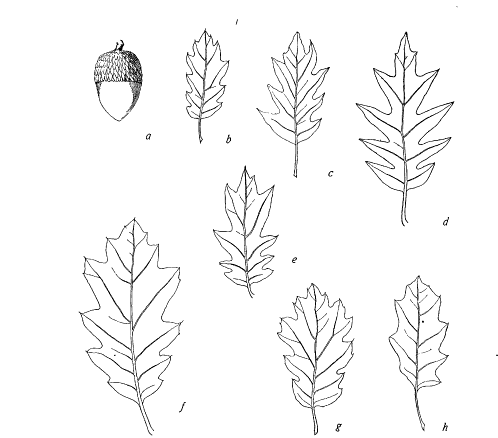Discovering new natives
I have always loved the names of plants. I don’t know why, but I must know what a plant name is and then look up all the information I can find on it. This property of ours, in the Central California foothills has given me lots of plants to identify and apparently, after ten years here there is more to learn! Fun!
All about the Oracle Oak
In writing the page, here on this site, about existing plants at our place, I have tried to find an ID for the oak up on the hill above the house. I had guessed it was a black oak, but when looking for confirmation, found that the leaf was different from the photos I saw online.
Just this week, I emailed my friend Bonnie Bladen at Intermountain Nursery nearby and asked what oak this could be. I had already looked at Calphotos and Calflora and Las Pilitas Nursery, two good sources of information. I was surprised when she emailed back that it was an oak hybrid, called an Oracle Oak, Quercus moreha or Quercus morehus. She says:
Hi Sue,
You must have found that tree in North Fork which is one of the local areas where there are lots of them. It is a cross between the Black Oak, Quercus kelloggii, and the Live Oak, Quercus wislizenii. They call it the Oracle Oak, or Quercus morehus. It ony occurs in areas where there are lots of one of the parent species and not many of the other parent and between Oak ‘sub-tribes’ that are related to each other. The leaf looks like a cross between the big lobed Black Oak leaf and the small, sometimes serrated Live Oak leaf. It is an interesting occurrence and they are beautiful trees. Hope that helps. Look that up on-line and you can learn more.
Bonnie
How interesting! I walked down our hill and found that the two other oaks that turn a soft yellow like the one on the hill, are also Oracle Oaks. The large 50 foot oak at the bottom of the property is definitely a Black Oak, and all the rest are Interior Live Oaks.
I did look it up and the Oracle Oak is a fairly rare occurrence and was written about by Willis Linn Jepson, the authority on California flora in California, in a book called ‘The silva of California’ in 1910, one hundred years ago. Here is an excerpt:
(If you’re not interested in the intricacies of native plant life, skip on to something else!)
Natural Hybrids
Quercus Morehus* is a name given by Dr. Albert Kellogg to a singular tree which has until later years been little known. While there is by no means consensus of opinion it is generally regarded as a form of hybrid origin, one parent being the Black Oak and the other the Interior Live Oak.

A. California Black Oak (Q. kelloggii), a tall, deciduous tree; B. Interior Live Oak (Q. wislizenii ), a large, evergreen tree; C. Oracle Oak (Q. x morehus)a small, partly deciduous tree that retains numerous leaves during the winter months. The leaves of Q. x morehus (C) have the intermediate size and lobes of Q. kelloggii), and the marginal spines of Q. wislizenii
In support of this opinion it may be said (1) that the individuals seem intermediate between the two species named, (2) that they are variable in character, (3) that some of these variable forms show other hybrid characteristics in that they recall in certain features what are probably remote ancestors instead of their immediate parents, (4) that the number of individuals is few, (5) that the range is discontinuous, and (6) that they are eccentric in production of acorns.
Quercus Morehus has, however, not even yet received that special and thorough study which its interesting character deserves, and some of the points stated may lose in weight on further investigation. It occurs at scattered points in the Sierra Nevada, in the Berkeley Hills, on Mt. Tamalpais, on the Van Arsdale Ranch at Ridgewood in Mendocino County, but is most common in the Mt. St. Helena Range from Twin Sisters Peak northward to the region of the Ukiah-Blue Lakes grade.
A very considerable number of trees occur on the eastern slopes of Twin Sisters Peak in western Solano County from near the valley level to 1800 feet altitude, and these in their foliage show every gradation between the Interior Live Oak and the Black Oak (Fig. 5).
Some of these trees, however, are clothed with leaves which, while in a formal sense intermediate in character between the species named, are so suggestive of the leaves of a genus closely allied to the oaks that these particular trees were constantly spoken of in the field as “chestnut trees” at the time of the field examination. There were no acorns on any of these trees in the autumn of 1903° and it is thought that this form as a rule fruits sparingly, but Carl Purdy, who holds views contrary to the author as to its specific character, says that certain trees near Ukiah, long familiar to him, fruit most freely. In studying the fruit it will be most interesting to remember that the acorns of the two assumed parents are very dissimilar in structure.
In the Sierra Nevada of Calaveras County it is called Evergreen Black Oak, since it holds its leaves like those of the Live Oak until the new leaves come in the spring. In El Dorado County it is termed Spanish Oak by the settlers, who value its wood above that of either parent.
A Morehus Oak stands at the northerly end of Lagoon Valley, Solano County. R. H. Piatt, who has observed this tree for several years, says the acorns “usually blight in the cup,” but the tree bore fruit in the fall of 1903 (Pig. 5).
Since the above was written I have had the following note from the Kaweah region, written by Ralph Hopping: “There are three Quercus Morehus trees at the head of Sheep Creek. One is seven feet in circumference and had a good crop of acorns in 1907. A few feet from this tree stand both Q. Kelloggii and Q. Wislizenii, and the characteristics of both are wonderfully blended in the hybrid. The foliage, while having the sharp stiff leaves of Q. Wislizenii (only larger) retain the hair at the end of the lobe as in Q. Kelloggii. The acorn cup
9 On October 3, 1908, the writer revisited the locality and collected acorns from two typical Morehus Oak trees. Most of the Morehus Oak trees appeared to be sterile. A tree with the “chestnut type” of foliage stands two hundred yards north of the wagon grade in a swale about one mile from the entrance gate to the Twin Sisters water reservation at the valley level. The ground beneath this tree was covered with half-grown dropped acorns. Numerous Quercus Wislizenii trees were fruiting freely, nearly every one examined having its own peculiar type of acorn and foliage. Many of them were especially interesting as showing indications of being secondary or tertiary hybrids between Quercus Wislizenii and Quercus Morehus. A few trees of Quercus agrifolia were observed on the mountain; their acorns were evidently ripening later than those of Quercus Wislizenii.
Fig. 5. Quercus Morehus Kellogg, a, b, acorn and leaf of tree in Lagoon Valley, B. H. Piatt, c, d, e, f, g, h, series of lea’es, showing variation from Quercus Wislizenii to Quercus Kelloggii. Twin Sisters Peak, W. L. J., nos. 2381, 2379, 2386, 2377, 2375, 2377, respectively, a = natural size; b-h= X
is a blend between the two and about midway in size as in the acorn, which has the Kelloggii pubescence and in some cases the stripe of the Live Oak acorn. The trunk is very much like the Black Oak.”
« Specimens from an undoubted Quercus Morehus tree at West Point, Calaveras County, have been sent me recently by Mrs. Augusta D. Reid, who says the acorns ripen in advance of any other oak. The cups are deep-cupped as in Quercus Wislizenii; the nuts-are cylindric, ten to twelve lines long, six lines in diameter, and blunt at tip, thus suggestive of Quercus Kelloggii. Another hybrid tree, or rather cluster of six sprouts from an old stump, grows near Sebastopol. Acorns have never been produced according to Mrs. Charles L. Wheeler, who has had the cluster under observation.
-End quote-
Note: I’ve since walked around the place and discovered that four more large oaks are Oracle Oaks, not Black Oaks like I first thought. Cool!



22 comments